It has a wider color gamut, has a higher luminous efficiency, has the ultimate pure black performance, it is a strong competitor of the next generation of display technology king - OLED TV.
In the historical development of the display industry for decades, there has never been a lack of technological disputes. In the past ten years, we have witnessed the "you fight for theft" of liquid crystal and plasma. In the next ten years, we may usher in the battle for "the throne" between OLED and quantum dots.
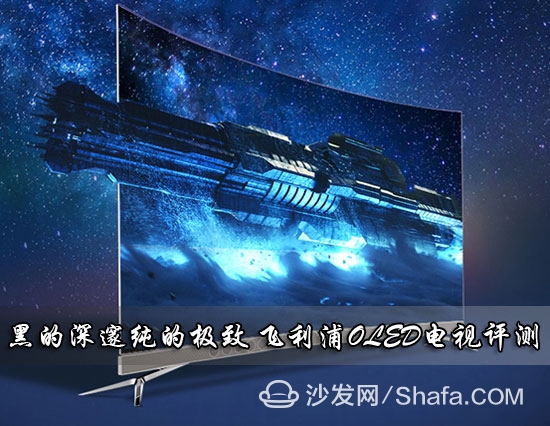
Some people say that insufficient production capacity and high prices have hindered the development and popularization of OLED TVs, but it is not difficult to see from the successive investments of LG, Skyworth, Sony, Philips and many other companies that major TV companies are very optimistic about the future of OLED TVs.
According to data from a third-party survey agency, the 2016 OLED market scale reached 15 billion U.S. dollars. It is estimated that by 2022, this market will grow to 29.1 billion U.S. dollars. It is not difficult to analyze from the data. OLED has strong development potential. Of course, the reason why OLED TV can achieve a sharp increase in market share can not be separated from a strong technical level and a slightly reduced market price.
With the increasing popularity of the price, OLED TVs, once used as "exclusive products" for high-end consumer groups, have begun to enter the homes of ordinary people. Although they have not yet reached popularity, they will be driven by the revolutionary new technologies that will lead the future of color TVs and the active promotion of many TV manufacturers. The replacement of LCD TVs with OLED TVs may become a new dominance in the display field, which may only be a matter of time.
Recently, the Philips OLED surface 65POD901C/T3 TV under the "flagship" aura came to the China National Grid Testing Center. While analyzing the product, we will also take the opportunity to in-depth excavate the OLED TV itself and strive to restore a "More realistic" OLED TVs.
With regard to OLED knowledge, you may have multiple acquisition channels, such as television, newspapers, magazines, networks, etc., but I believe that your understanding of OLEDs is only the "tip of the iceberg," in order to allow more consumers to With a more detailed understanding, we will focus on OLEDs in the coming days.
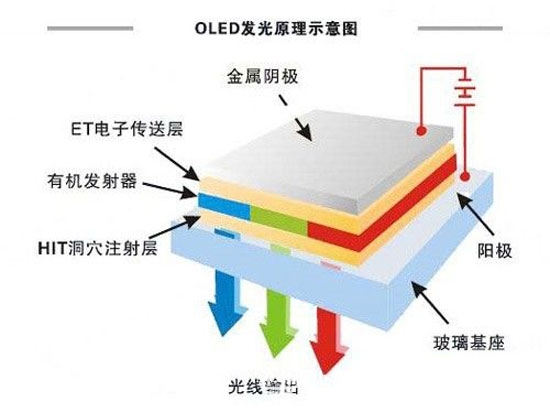
OLED light emission schematic
OLED full name: Organic Light-Emitting Diode, also known as organic light-emitting diodes, also known as organic EL display.
Self-luminous, ultra-thin, dynamic effects without residual image, high color purity is the advantage of OLED TV. In addition, the OLED is the best “partner†of the curved surface. Compared to the traditional LCD TV, the OLED's own flexible characteristics can make the “deformation†of the panel stressless. Combined with its own strong technical advantages and product features, OLED can greatly enhance the quality of expression, allowing users to experience the IMAX level of visual feast at home.

Internal structure diagram of LCD TV and OLED TV
Of course, as a topical technology product, consumers' evaluation of OLED TVs is also mixed. Consumers who have seen OLED TV strength will “appreciate†their “beautiful†image quality expression. Consumers who have not seen the strength of OLED TVs will come to an early conclusion based on “rumors†in the industry, such as low OLED yields and no price competitiveness; OLEDs have poor display compared to LCD screens; OLED TVs have a short lifespan. There are many afterimages and so on.
Free bending on the form is a highlight of the OLED panel
So many misunderstandings do bring a lot of "trouble" to the popularity of OLED TVs. What about OLED TVs? Today, we will unveil OLED TVs through the evaluation of Philips OLED surface 65POD901C/T3 TVs. "People know" mystery.
For top-level products, the importance of process design is self-evident. Taking into account the "special" technological form of OLED TVs, we will focus on the process design of the Philips OLED surface 65POD901C/T3 TV in the coming time.

Philips OLED surface 65POD901C/T3 TV front real shot
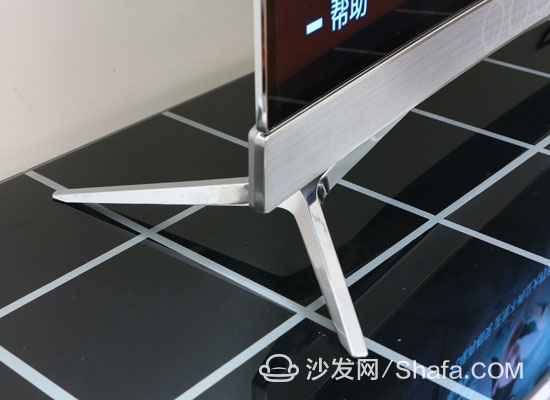
One-piece base design
Ultra-thin ultra-thin fuselage plus ultra-narrow metal frame Philips OLED surface 65POD901C/T3 TV hit a very technological sense of the product, combined with the curvature of the R5000 design, giving consumers a strong sense of imagery surrounded. As a "flagship" product, Philips OLED surface 65POD901C/T3 TV pays great attention to the optimization of details, such as the processing of the border rounded corners, the "breathing light" at the bottom of the screen, the brushed metal back panel, and the back light for creating "abundant". Bands, etc., fully reflect the design level that the top products should have.
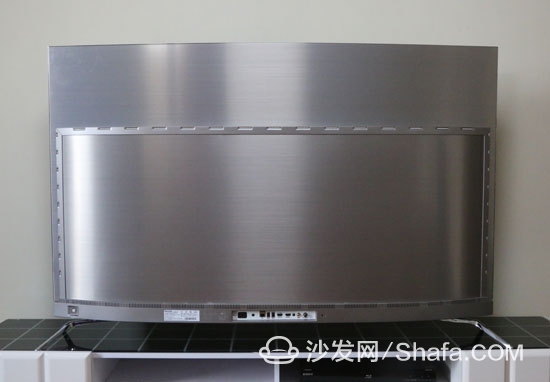
Brushed metal backplane

Indie sound details close-up

Back interface distribution
Unlike other competing products on the market, Philips OLED surface 65POD901C/T3 TV is integrated with the base and fuselage, which helps to enhance the overall beauty of the product while also helping to enhance the stability and firmness of the product. In addition, in the product's back interface design, taking into account the daily needs of consumers, Philips OLED surface 65POD901C/T3 TV has joined a number of HDMI interfaces, SUB interfaces, etc., rich and diverse interface design to add to the lives of consumers Little joy.
Of course, as a "flagship" product, Philips' OLED surface 65POD901C/T3 TV's "achievement" in the process is far from this. Next we will bring you the "essence" of Philips OLED surface 65POD901C/T3 TV in process design.
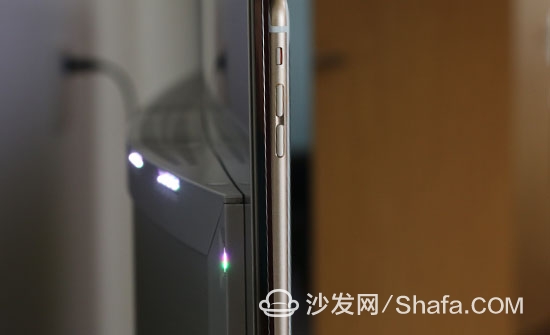
Thicker body thickness than iPhone
Nowadays, large-screen, thin and light has become the mainstream of TV development. Therefore, how to “cut†the overall thickness of the TV has become a problem that TV manufacturers need to solve. OLED TVs are self-illuminating organic TVs. They are totally different from LCD TVs and do not require backlights. Therefore, they are thinner than ordinary LCD TVs.

Vernier caliper test surface OLED TV body thickness

Vernier caliper test Ultra-thin LED backlight LCD TV body thickness

Comparison of body thickness (left OLED TV, right LCD TV)
So how many thin OLED TVs can be achieved? The actual test found that the body thickness of Philips OLED surface 65POD901C/T3 TV in the vernier caliper after multiple measurements showed an average of 6.68mm (official data is 6.47mm, consider There is an error in the test process, so the test results are for reference only. This is even thinner than our usual iPhone. Of course, this is not the limit of OLED TV, it is understood that the thinnest OLED TV body thickness can be achieved 2.57mm (but not to reach the scale of mass production).
In contrast, the thickness of the LCD TV's body is "a lot of color." At present, only the Sony X9300C series of televisions can achieve 4.9mm body thickness through technical means, and other products either cannot achieve a reduction in thickness or can not achieve mass production. Of course, the slimness of the body also brings great challenges to the sound performance of the product. Faced with the difficulties that LCD TVs have been able to overcome so far, how is OLED TV solved?
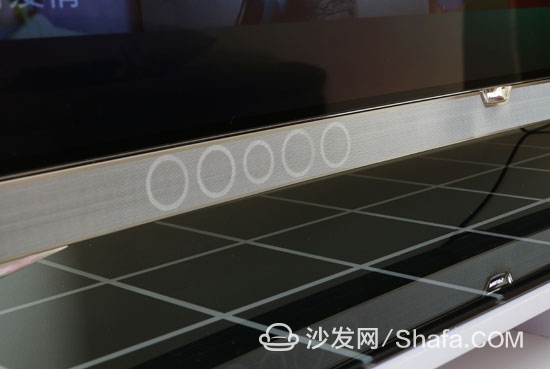
Independent speaker details at the real shot
According to reports, to reduce the thickness of the product at the same time, in order to enhance the performance of the product in the sound, Philips OLED surface 65POD901C/T3 TV in the bottom of the screen to join the speaker panel, independent 5 +5 speaker support Dolby sound and crystal clear Sound effects technology can bring consumers a cinematic audiovisual experience, appealing to IMAX theater-like effects while meeting consumer demand for viewings.
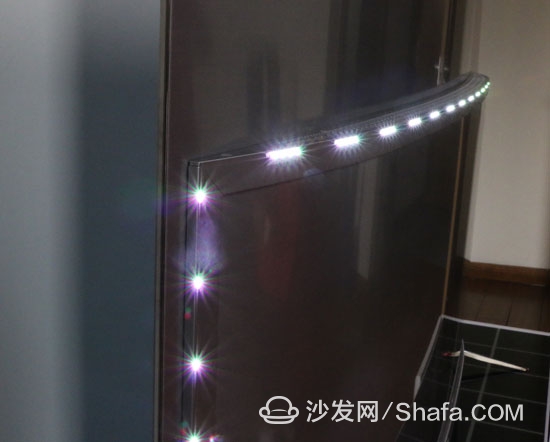

Backboard real shots of "Aurora" special effects in on and off state
The last thing I have to say is the backlight strip that is specially prepared for the “abundance†effect on the back of the panel. As the background of the TV screen changes, the color of the light strip will also change, and the color of the screen will expand to the same time. Give consumers more shocking visual impact, and this is precisely what other competitors do not have.
For LCD TVs, the light leakage phenomenon is caused by the structural characteristics of the LCD panel itself, which is a relatively normal phenomenon to some extent. At the same time, light leakage will not affect the basic parameters such as the brightness, response time, and life span of the TV itself. In recent years, there have been very few “real†consumers’ over-the-top leaks.
But what seems to be a habitual "leakage phenomenon" in front of OLED TVs?
Due to the identification error of the photosensitive device during the shooting process, the test results will be somewhat distorted. In order to restore the true test truth, we will restore the actual results in the form of text.

Philips OLED Surface 65POD901C/T3 TV - Pure Black Performance

Ordinary LCD TV - Pure Black Performance
Through actual testing, we can see that there is a gap between the two in the processing of pure black screens. When OLED TVs process black screens, the full screen can be completely dark, and the deep darkness is worthless. In contrast, LCD TVs are much worse for the processing of black screens. Although the screens are all black, but the black is not so thorough, the overall bleakness is there? Then what is the cause? I believe this It is related to the unique self-luminous characteristics of OLED TVs.

Dynamic afterimages cannot be completely eradicated due to the working principle of LCD TVs
In addition to solving the "leakage phenomenon" of the panel, the dynamic effect of the OLED TV is also very good. Compared with the deflection of liquid crystal molecules, OLED TVs are far superior to LCD TVs in response speed, and their speed is far beyond human eyes' recognition. Therefore, when consumers watch sports games or game screens, they cannot feel the screen residue. The appearance of shadows.
As a display output device, the overall performance of the screen is the only measure of the level of the product. Then in the next section, we will fully demonstrate the performance of Philips OLED surface 65POD901C/T3 TV in terms of color purity.
Note: The camera is different from the naked eye after all. We strive to produce photos that are more consistent with the eyes. However, the photosensitive components will be distorted once and the photo conversion will be distorted once. When you look at these photos or videos, you also use a liquid crystal display, which may have some distortion depending on the quality. Therefore, please use text descriptions as the basis. We guarantee that all texts are consistent with the actual experience of the on-site experience.

Philips OLED Surface 65POD901C/T3 TV - Pure Color Test
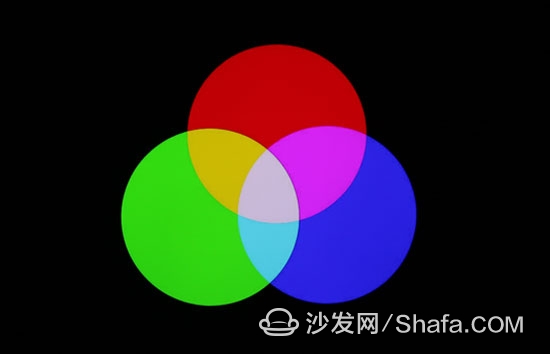
Ordinary LCD TV - Pure color performance

Philips OLED Surface 65POD901C/T3 TV Grayscale Test
As with the previously tested black screen effect, Philips OLED surface 65POD901C/T3 TV shows a deeper feeling than the ordinary LCD TV. In addition, in the purity comparison of the three primary colors of red, green, and blue, Philips OLED surface 65POD901C/T3 television performance is also better than that of LCD TVs. Since the OLED TV can achieve independent control of each pixel, it is more accurate in color calibration and control, which is not available in LCD TVs.
Of course, there are grayscale performances of the screen. From black to white, we can clearly see the gradual change of the product, and such excellent performance is also lacking in LCD TVs.
It is worth noting that when the "primary intersection" of the three primary colors occurs, the control of the color purity of the LCD TV is not in place. Therefore, the synthesized color is even more distorted and eventually leads to the overall deviation of the picture.

OLED TV and LCD TV static picture contrast
For example, we see this group of comparative real shot maps, due to the inevitable panel light leakage phenomenon of LCD TVs, so the picture effects presented by the two types of TV products still have large deviations. On the Philips OLED surface 65POD901C/T3 TV, we can see the details of the image in the picture, such as the details in the black background above the first picture, but not in the ordinary LCD TV. Another example is the layering of the leaves in the lower right corner of the second picture, which is not visible in ordinary LCD TVs. Since blackness does not go down, we can hardly see the performance of the details of the picture. This has to be said to be a lack of picture.
The continuous development of science and technology has accelerated the change in the display industry. For the relatively stable TV market in the past decades, the technology has been stagnant and needs to inject new blood. OLED is exactly this new blood. With the maturing of OLED technology and the solution to the bottleneck problem of the previous technology, the display industry will usher in a new era.
In the display industry where technology is constantly emerging, OLED has become the best display technology of the moment. Although traditional LCD TVs will not disappear as soon as OLED strikes, but with the expansion of market size and further experience in the advantages of display technology, the OLED era will be closer and closer to us.
As a brand with a history of 125 years, Philips has always insisted on creating a “Good TV with Good Hardware + Good Content + Good Brand†for consumers. As the brand's "flagship" product, the avant-garde design concept and outstanding image quality performance is based on Philips OLED surface 65POD901C/T3 TV. Compared with other competing products in the industry, the biggest advantage of Philips OLED surface 65POD901C/T3 TV is that it can provide consumers with a more excellent viewing experience, combined with their own unique "brilliant" technology, it is difficult for consumers to bring Comparable visual impact.
In terms of the product itself, the Philips OLED surface 65POD901C/T3 TV is regarded as successful, but the "temporary" success is not enough to make the company stagnate. The future may usher in more powerful opponents, how to seize the market, and win consumers will determine the future development of the company.
Smart TV/box information can focus on smart TV information network sofa butler (http://), China's influential TV box and smart TV website, providing information, communication, TV boxes, smart TVs, smart TV software, etc. Answering questions.
2500 Puffs Electronic Cigarette
ALD GROUP LIMITED , https://www.aldvapor.com